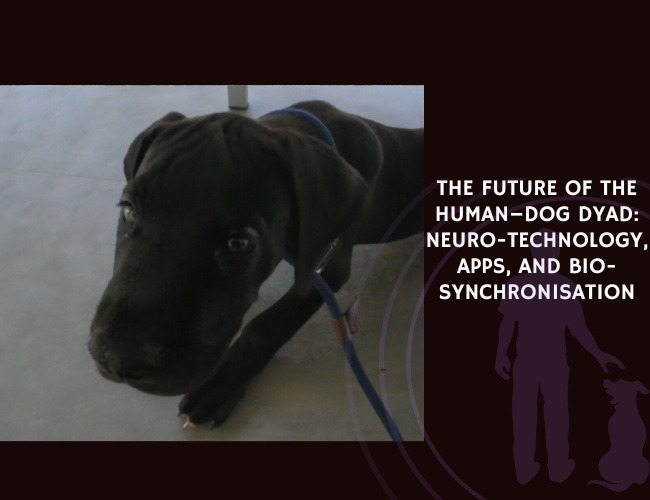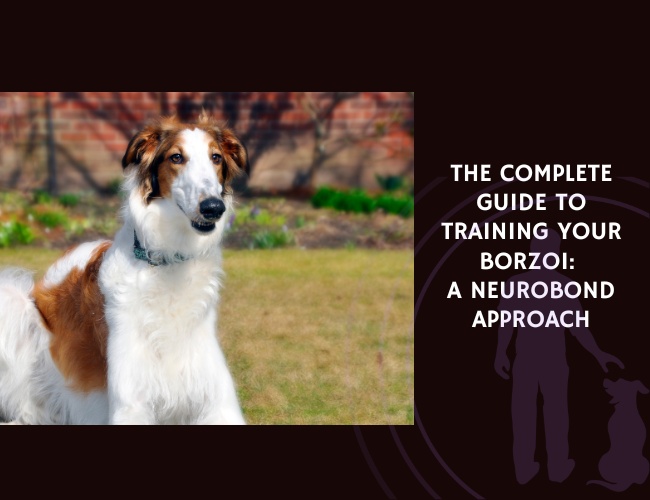Introduction
The bond between humans and dogs stretches back thousands of years, built on mutual trust, communication, and an almost mystical understanding that transcends species boundaries. Today, we stand at the threshold of a technological revolution that promises to deepen this ancient connection in ways our ancestors could never have imagined. From brain-computer interfaces that might decode your dog’s thoughts to AI-driven apps that translate tail wags into emotional states, the future of the human-dog relationship is being rewritten in lines of code and streams of data.
You might notice your furry friend already wearing a smart collar, tracking their daily activities and sleep patterns. But what if we told you that scientists are developing technology that could literally synchronize your brainwaves with your dog’s, creating a deeper level of understanding than ever before possible? This isn’t science fiction – it’s the emerging reality of neuro-technology, wearable biosensors, and artificial intelligence working together to bridge the communication gap between species.
As we explore this brave new world of canine-human technology, we’ll guide you through the latest breakthroughs, the practical applications already changing lives, and the ethical considerations we must navigate. Whether you’re a tech-savvy dog owner eager to embrace these innovations or someone who treasures the natural bond with your four-legged companion, understanding these developments will help you make informed decisions about your dog’s future care and wellbeing 🐾
Neuro-Technology & Canine Communication
Understanding How Technology Reads Your Dog’s Mind
The idea of reading your dog’s thoughts might sound like something from a futuristic movie, but researchers are making remarkable progress in this field. Brain-Computer Interface (BCI) systems, originally developed for human applications, are showing promise in detecting emotional states through electrical brain activity. When adapted for our canine companions, these systems could revolutionize how we understand what our dogs are feeling.
Current research demonstrates that EEG (electroencephalography) technology can detect emotional states in humans with accuracy rates exceeding 93% in controlled conditions. Your dog’s brain, while structurally different from yours, produces similar electrical patterns when experiencing emotions like joy, fear, or stress. Scientists are now working to map these patterns, creating a dictionary of sorts that translates brain activity into emotional states we can understand.
The practical applications are profound. Imagine knowing with certainty when your dog is experiencing anxiety during a thunderstorm, even before visible signs appear. This technology could help you intervene earlier, providing comfort before stress escalates into destructive behavior or long-term trauma.
Key emotional states that BCI technology can detect:
- Joy and excitement – Specific brainwave patterns associated with play anticipation and positive social interactions
- Fear and anxiety – Elevated beta waves and amygdala activation patterns that appear before visible stress signs
- Focus and attention – Alpha wave patterns indicating optimal learning states during training sessions
- Pain and discomfort – Unique neural signatures that differ from general stress, helping identify hidden injuries
- Social bonding – Oxytocin-related brain activity during human interaction and pack dynamics
The Promise of Brain Imaging in Decoding Dog Cognition
Functional Near-Infrared Spectroscopy (fNIRS) represents another frontier in understanding canine cognition. Unlike traditional MRI machines that require complete stillness – a challenge for most dogs – fNIRS is portable and less invasive. This technology measures blood flow in the brain, revealing which areas activate when your dog processes different stimuli or emotions.
Research has shown that dogs have specific neural responses to words they know, distinguishing between familiar commands like “walk” or “treat” and nonsense words. This suggests that with the right technology, we could decode not just emotions but actual cognitive processes – understanding what concepts your dog associates with different experiences.
The implications extend beyond curiosity. Veterinary behaviorists could use this technology to diagnose cognitive dysfunction in aging dogs earlier, potentially extending quality of life through targeted interventions. Training programs could be optimized based on real-time feedback about a dog’s learning state, making education more efficient and less stressful.
Practical applications currently in development:
- Veterinary diagnostics – Early detection of canine cognitive dysfunction, epilepsy prediction, and pain assessment
- Customized training protocols – Real-time adjustment of training intensity based on cognitive load
- Medication effectiveness – Monitoring brain activity changes to assess anxiety medication response
- Working dog selection – Identifying puppies with optimal neural patterns for service or therapy work
- Behavioral intervention timing – Pinpointing the exact moment to redirect unwanted behaviors
Brain-to-Brain Interfaces: The Ultimate Connection
Perhaps the most extraordinary development is the discovery of interbrain neural coupling between humans and dogs. When you gaze into your dog’s eyes or pet them, your brains literally synchronize in measurable ways. Research has found that this synchronization occurs in the frontal and parietal regions – areas associated with attention and social bonding.
This natural phenomenon suggests that technology could enhance an already existing biological connection. Future brain-to-brain interfaces might amplify this synchronization, creating a feedback loop where you become more attuned to your dog’s emotional state while they better understand yours. It’s not telepathy in the traditional sense, but rather a technologically enhanced version of the intuitive connection many dog owners already feel with their pets 🧠
Wearables & Physiological Synchronization
Heart Rate Variability and the Emotional Mirror
Your heart doesn’t beat like a metronome – the variation between beats, known as Heart Rate Variability (HRV), tells a complex story about stress, relaxation, and emotional state. When you interact with your dog, something remarkable happens: your HRV patterns begin to mirror each other, creating a physiological dance of shared emotion.
Modern wearable devices can now track this synchronization in real-time. During calm petting sessions, both human and canine HRV show increased variability – a sign of relaxation and parasympathetic nervous system activation. During play, the patterns shift together toward excitement. This bio-synchronization explains why spending time with your dog can lower your blood pressure and why your anxiety might make your dog nervous.
The data these devices collect goes beyond mere curiosity. Therapy dog programs are beginning to use HRV monitoring to ensure both the therapy dog and patient are benefiting from interactions. If a therapy dog’s stress levels rise too high, handlers can intervene before burnout occurs, protecting the welfare of these invaluable working animals.
Stress Detection Through Multiple Channels
Modern canine wearables don’t stop at heart rate. They’re becoming sophisticated multi-sensor platforms that paint a complete picture of your dog’s physiological state. Thermal imaging can detect subtle temperature changes that indicate stress or illness before visible symptoms appear. Accelerometers track not just activity levels but specific behaviors – distinguishing between normal scratching and the obsessive scratching that might indicate allergies or anxiety.
When combined with environmental data (temperature, humidity, noise levels), these devices create a comprehensive stress profile for your individual dog. You might discover that your dog’s anxiety spikes not during thunderstorms themselves, but in the hours before, when barometric pressure drops. Armed with this knowledge, you can provide preemptive comfort, potentially preventing full-blown storm phobia from developing.
Common stress triggers identified through multi-sensor monitoring:
- Environmental changes – Barometric pressure drops (2-4 hours before storms), humidity increases above 70%, temperature fluctuations exceeding 10°F
- Sound frequencies – Ultrasonic pest deterrents, construction vibrations below 20Hz, specific doorbell tones
- Social stressors – Unfamiliar human pheromones, other dogs’ stress hormones, changes in owner’s emotional state
- Routine disruptions – Meal delays beyond 30 minutes, walk schedule variations, unexpected solitude
- Physical discomfort – Early arthritis indicators, digestive upset patterns, dental pain during eating
The Limits and Possibilities of Biofeedback Technology
While the potential is enormous, we must acknowledge the challenges in applying human-grade biofeedback technology to dogs. Canine physiology differs from ours in important ways – their normal heart rate range is different, their stress responses vary by breed, and their inability to self-report feelings means we must infer emotional states from physiological data alone.
The form factor presents another challenge. A device comfortable for a Chihuahua might be unsuitable for a Great Dane. Waterproofing, durability, and battery life all become critical when your user loves to roll in mud and swim in lakes. Yet despite these challenges, companies are rising to meet them, creating dog-specific devices that are robust, comfortable, and increasingly sophisticated 🧡

AI-Driven Apps & Behavioral Intelligence
The Current State of Activity Monitoring
Today’s dog activity monitors like Whistle and FitBark have evolved far beyond simple step counters. Using advanced accelerometers and machine learning algorithms, these devices can distinguish between different types of movement with remarkable accuracy. They know the difference between your dog drinking water (with 94.9% accuracy) and eating food (95.3% accuracy), between playful rolling and concerning scratching.
This granular behavioral data becomes invaluable for health monitoring. A sudden decrease in drinking behavior might indicate dental pain making it uncomfortable to drink. Increased nighttime activity could signal cognitive dysfunction in senior dogs. These devices have proven particularly effective at detecting pruritis (itching) behaviors, with studies showing that owners who receive alerts about increased scratching are significantly more likely to seek veterinary care early, potentially catching skin conditions or allergies before they become severe.
Behaviors that current AI monitors can accurately detect:
- Eating patterns – Duration, frequency, speed of consumption, food guarding behaviors (95.3% accuracy)
- Drinking habits – Frequency, duration, excessive or insufficient intake patterns (94.9% accuracy)
- Sleep quality – REM cycles, restlessness, sleep position changes, nighttime anxiety
- Scratching/grooming – Distinguishing between normal grooming and obsessive behaviors, specific body areas affected
- Elimination patterns – Frequency, duration, straining indicators, marking vs. elimination
- Social interactions – Play bow frequency, tail wag patterns, approach/avoidance behaviors
- Vocalizations – Bark types (alert, play, distress), whining patterns, unusual silence periods
The real power lies not in isolated data points but in patterns over time. Your dog’s unique behavioral baseline becomes a health fingerprint – deviations from this baseline can alert you to problems long before they become obvious to the naked eye.
Translating Behavior into Emotional Language
Artificial Intelligence is becoming increasingly sophisticated at pattern recognition, and this capability is now being applied to decode the emotional meaning behind canine behaviors. By analyzing thousands of hours of video footage paired with expert behavioral assessments, AI systems are learning to recognize subtle combinations of body posture, tail position, ear orientation, and movement patterns that indicate specific emotional states.
These AI-driven apps don’t just tell you “your dog is happy” – they can distinguish between the excited happiness of anticipating a walk, the contented happiness of a belly rub, and the social happiness of greeting a favorite human. They’re learning to recognize the early warning signs of resource guarding, the subtle stress signals that precede aggressive behavior, and the particular combination of movements that indicate your dog is in pain but trying to hide it.
This emotional translation helps bridge the communication gap between species. You might learn that what you interpreted as stubbornness during training is actually confusion or anxiety. That “guilty look” when you come home to a destroyed cushion isn’t guilt at all, but appeasement behavior triggered by your body language. Understanding these nuances transforms how we interact with our dogs, making training more effective and relationships more harmonious.
Predictive Algorithms: Preventing Problems Before They Start
The true promise of AI lies not just in understanding the present but in predicting the future. Predictive algorithms analyze patterns in your dog’s behavioral and physiological data to anticipate problems before they fully manifest. These systems learn your individual dog’s patterns – when they typically get hungry, how their activity levels change with weather, their normal response to various stimuli.
Machine learning models can now identify combinations of factors that predict aggression with surprising accuracy. Changes in sleep patterns, increased pacing, subtle alterations in social behavior – individually these might mean nothing, but together they form a pattern that suggests brewing behavioral issues. Early intervention based on these predictions can prevent minor issues from becoming major problems.
Health predictions are equally powerful. By analyzing activity patterns, eating behaviors, and even the way your dog moves, AI can flag potential health issues days or weeks before clinical signs appear. A slight favoring of one leg might indicate early arthritis. Changes in bathroom habits could suggest digestive issues or diabetes. This early warning system gives you and your veterinarian the opportunity for preventive care rather than reactive treatment.
Early warning signs AI can detect before visible symptoms:
- Orthopedic issues – Gait asymmetry (detecting 0.5% variation), reduced jump height, longer lying-down process, morning stiffness lasting >3 minutes
- Metabolic disorders – Water consumption increase of 20%, urination frequency changes, energy dips after meals, weight fluctuations of 2%
- Cognitive decline – Confusion at familiar corners, sleep-wake cycle disruption, decreased response to known commands, repetitive behaviors
- Dental problems – Head tilting while eating, preference for one side chewing, decreased treat acceptance, pawing at mouth
- Cardiac issues – Recovery time after exercise extended by 15%, reluctance for usual activities, subtle breathing pattern changes
- Gastrointestinal upset – Grass eating increase, abdomen stretching frequency, meal skipping patterns, unusual postures after eating 😄
Connected. Digital. Evolving.
Technology deepens bonds. From smart collars to brain-computer interfaces, innovations are transforming how we understand and support our dogs’ emotions and wellbeing.
Science translates feelings. EEG and biosensors reveal patterns of joy, fear, focus, and pain, creating new ways to detect hidden states before they surface in behaviour.



The future bridges minds. With neuro-technology and AI, the human–dog relationship expands beyond words, synchronising trust and understanding through data and connection.
Training & Welfare Applications
Real-Time Training Adaptation Through Stress Monitoring
Traditional dog training often relies on reading visible signs of stress or engagement, but what if you could know exactly when your dog reaches their optimal learning state? HRV-based training systems are making this possible. By monitoring your dog’s stress levels in real-time during training sessions, these systems can alert trainers when to push forward and when to take a break.
You might discover that your dog learns best in 7-minute intervals with 3-minute play breaks, or that they retain information better when training happens at certain times of day. Some dogs show peak cognitive performance in the morning, while others are evening learners. This physiological feedback takes the guesswork out of training, preventing the frustration and negative associations that can develop when we push our dogs beyond their cognitive limits.
Professional trainers are beginning to use these systems to customize programs for individual dogs. A fearful rescue dog might need gentler, shorter sessions with longer recovery periods. A high-drive working dog might thrive with more intensive sessions. The data doesn’t lie – when stress hormones spike, learning efficiency plummets. By staying within the optimal stress window, training becomes faster, more effective, and more enjoyable for both dog and handler.
Optimal training parameters discovered through biometric monitoring:
- Session duration by temperament – Anxious dogs: 5-7 minutes, Balanced dogs: 10-15 minutes, High-drive dogs: 15-20 minutes
- Break intervals for maximum retention – 3-minute play breaks every 10 minutes, 30-second praise breaks every 3 minutes
- Stress indicators requiring immediate break – HRV decrease of 30%, cortisol spike above baseline by 40%, lip licking frequency >5 per minute
- Peak learning windows – Morning types: 8-10 AM, Evening types: 4-6 PM, Food-motivated: 30 minutes before meals
- Recovery requirements – Puppies: 2-hour rest post-training, Adults: 45-minute decompress, Seniors: 3-hour gentle activity
Revolutionizing Therapy Dog Programs
Therapy dogs provide invaluable service, but their welfare has traditionally been monitored through behavioral observation alone. Emotional synchronization technology is changing this, ensuring that therapy work remains rewarding rather than stressful for these special animals.
New monitoring systems track both the therapy dog and recipient simultaneously, measuring the bidirectional flow of calm and comfort. When a therapy dog’s stress levels rise above acceptable thresholds, handlers receive alerts to provide breaks or end sessions. This protects against burnout while also ensuring that stressed dogs don’t inadvertently transmit anxiety to vulnerable patients.
Key metrics for therapy dog welfare monitoring:
- Baseline establishment – 2-week monitoring period before therapy work begins
- Session stress thresholds – Maximum 25% increase in cortisol, HRV must return to baseline within 10 minutes
- Recovery indicators – Sleep quality post-session, appetite maintenance, play behavior retention
- Burnout prevention – Maximum 3 sessions per week, mandatory 48-hour breaks, quarterly wellness assessments
- Handler-dog synchrony – Optimal emotional coupling ranges, stress transfer patterns, mutual regulation success
The data collected is revealing fascinating insights about human-animal therapy. Certain dog-human pairs show stronger synchronization than others, suggesting that matching could be optimized for therapeutic effectiveness. Some conditions respond better to certain types of interactions – autistic children might benefit most from quiet, pressure-based contact, while elderly dementia patients might respond to more active engagement. This personalized approach to animal-assisted therapy maximizes benefits while protecting the welfare of therapy animals.
Predictive Health Monitoring: The Preventive Care Revolution
The convergence of AI, behavioral monitoring, and nutritional science is creating unprecedented opportunities for preventive health care. Your dog’s daily data stream – activity levels, sleep quality, eating patterns, bathroom habits – feeds into AI systems that understand the subtle interplay between behavior and health.
These systems can now predict obesity risk based on activity patterns and recommend dietary adjustments before weight becomes a problem. They identify early signs of cognitive dysfunction in senior dogs, suggesting enrichment activities that might slow decline. They recognize patterns that precede seizures in epileptic dogs, allowing owners to provide medication or remove triggers before an episode occurs.
Nutritional recommendations are becoming increasingly sophisticated. AI systems consider not just your dog’s breed, age, and weight, but their individual metabolism, activity patterns, and even genetic markers. They might recommend increasing omega-3 fatty acids during allergy season, adjusting protein levels based on activity, or suggesting specific supplements to address breed-specific health risks. This personalized nutrition extends beyond general health – it can optimize coat condition, support joint health, and even influence behavior through gut-brain axis modulation.
AI-driven nutritional adjustments based on real-time data:
- Activity-based calorie scaling – Low activity day: -15% calories, High activity: +20-30%, Recovery day: +10% protein
- Seasonal modifications – Spring allergies: Increased omega-3s, Summer heat: Electrolyte supplementation, Winter cold: +5-10% calories
- Behavioral nutrition – Anxiety: L-theanine and tryptophan, Hyperactivity: Complex carbs for steady energy, Senior cognitive support: MCT oil and antioxidants
- Breed-specific optimization – Large breeds: Glucosamine from age 2, Brachy breeds: Smaller, frequent meals, Northern breeds: Higher fat content
- Health condition management – Kidney issues: Phosphorus restriction, Joint problems: Anti-inflammatory ingredients, Skin conditions: Novel proteins and fatty acids 🐾

Ethical Considerations & Future Boundaries
Walking the Line Between Care and Surveillance
As we embrace these technological marvels, we must carefully consider where helpful monitoring ends and intrusive surveillance begins. Your dog cannot consent to being monitored, cannot opt out of data collection, and cannot understand how their biological data might be used. This places a profound ethical responsibility on us as their guardians.
The key distinction lies in intent and benefit. Technology that genuinely improves your dog’s welfare – detecting illness early, preventing behavioral problems, optimizing nutrition – clearly serves their interests. But what about data collected for purely human convenience? Or information sold to third parties for marketing purposes? The line between empowerment and surveillance is drawn by whose interests are being served.
Consider the implications of constant monitoring on your dog’s autonomy. Dogs, like humans, might benefit from some degree of privacy – moments to be themselves without observation or judgment. While we can’t ask them directly, we can observe that many dogs seek solitude at times, suggesting that constant surveillance might be psychologically stressful. The challenge is balancing the benefits of monitoring with respect for our dogs as sentient beings with their own needs and preferences.
Ethical guidelines for responsible tech use:
- Consent proxies – Watch for stress signs when introducing devices, respect your dog’s comfort level, provide device-free time daily
- Data minimization – Collect only what improves welfare, avoid sharing unnecessary personal patterns, delete old irrelevant data
- Benefit assessment – Technology should reduce suffering, enhance communication, or prevent problems – not just satisfy curiosity
- Natural behavior preservation – Maintain off-leash exploration time, allow unmonitored play, respect denning instincts
- Owner accountability – Regular welfare assessments, veterinary consultation on data interpretation, avoiding obsessive monitoring
Preserving Natural Communication in a Digital Age
There’s a beautiful, wordless dialogue that occurs between humans and dogs – a language of glances, postures, and subtle cues that we’ve developed over millennia of coevolution. As we introduce technology into this relationship, we must ask: Are we enhancing this natural communication or replacing it?
The risk of over-reliance on technology is real. If you depend entirely on an app to tell you your dog is stressed, you might miss the subtle ear position or lip lick that you would have noticed through careful observation. The intuitive understanding that develops through countless hours of interaction might atrophy if we outsource all interpretation to algorithms.
Signs you might be over-relying on technology:
- Checking apps before observing your dog – Looking at data instead of body language
- Ignoring intuition when it conflicts with data – Dismissing your gut feelings
- Reduced physical interaction – Less petting, play, or direct engagement
- Anxiety when devices malfunction – Panic when batteries die or apps crash
- Social isolation – Prioritizing data sharing over real-world dog socialization
Yet technology doesn’t have to replace natural communication – it can augment it. Think of these tools as translators that help you understand signals you might otherwise miss, or as validators that confirm what your intuition already suspects. The goal should be to use technology to become more attuned to your dog, not less. The app that tells you your dog is anxious should prompt you to look closer, to learn their individual stress signals, to become a better observer of their natural communication.
Privacy, Data Rights, and the Future of Interspecies Information
The data collected from your dog reveals as much about you as it does about them. Your daily walk routes, your schedule, your response to your dog’s needs – all of this information paints a detailed picture of your life. When we talk about canine data privacy, we’re really talking about protecting both species in the human-dog dyad.
Current data protection laws weren’t written with interspecies data in mind. Your dog can’t consent to data collection, can’t request their data be deleted, and can’t object to how it’s used. This regulatory gap places the burden of protection on device manufacturers and pet owners. As these technologies proliferate, we need frameworks that recognize the unique nature of interspecies data and provide appropriate protections.
Critical questions to ask before adopting pet technology:
- Data ownership – Who owns the collected data? Can you export it? Is it deleted if you stop using the service?
- Third-party sharing – Which companies have access? Is data sold to insurers, marketers, or researchers?
- Security measures – Is data encrypted? What happens if there’s a breach? Are location services protected?
- Algorithm transparency – How are health predictions made? Can you see the reasoning? Who validates accuracy?
- Opt-out options – Can you use basic features without sharing data? Are there offline modes? Can you delete historical data?
- Cross-platform integration – Does it require other accounts? What permissions are needed? How is data synchronized?
The commercial implications are significant. The pet industry is worth billions, and behavioral data about dogs and their owners is valuable for everything from pet food marketing to insurance risk assessment. While sharing aggregated, anonymized data might advance veterinary science and improve products, individual data should remain protected. The challenge is creating systems that enable beneficial research while preventing exploitation.
The Integrated Future: A Day in the Life of Tomorrow’s Dog
Morning: Personalized Wake-Up and Health Check
Imagine starting your day with a comprehensive health report about your furry friend. Their wearable device has monitored their sleep quality, detecting that they were restless between 2-3 AM – unusual for them. The AI assistant suggests this might be related to the slight increase in ambient temperature it detected and recommends adjusting your home’s nighttime climate control.
Morning routine optimization based on overnight data:
- Sleep quality assessment – REM cycles, position changes, vocalization patterns
- Physical comfort check – Joint stiffness indicators, bathroom urgency, hydration status
- Mood prediction – Energy levels, social engagement readiness, training receptiveness
- Environmental adjustments – Temperature, lighting, background noise optimization
- Breakfast customization – Portion size, supplement additions, feeding time adjustment
As your dog wakes, their morning stretch and first movements are analyzed for any signs of stiffness or discomfort. The system notices a slight favoring of the left hip – nothing concerning yet, but it will monitor this pattern. Their breakfast portion is automatically adjusted based on yesterday’s activity levels and today’s weather forecast, which suggests a longer walk will be possible.
Midday: Optimized Training and Enrichment
During your lunch break, you engage in a training session guided by real-time stress monitoring. The app suggests working on impulse control today, as your dog’s cognitive indicators show they’re in an ideal learning state. As you practice “leave it” commands, the system monitors your dog’s engagement, suggesting a break just before frustration sets in.
The training AI notices that your dog responds better to hand signals than verbal commands when slightly stressed, a pattern you hadn’t recognized. It suggests incorporating more visual cues into your training repertoire. After the session, it provides a summary: your dog retained 85% of new behaviors, stress levels remained optimal, and the emotional synchronization between you both increased by 12% compared to last week’s session.
Evening: Predictive Care and Emotional Connection
As evening approaches, your dog’s activity monitor detects subtle changes in behavior that match patterns from three months ago – the last time they developed a hot spot. The system alerts you to check for skin irritation and suggests scheduling a vet appointment if you notice any redness. Caught this early, a simple medicated shampoo prevents weeks of discomfort and expensive treatment.
During your evening cuddle session, the emotional synchronization app confirms what you feel – both your stress levels dropping in tandem, your heart rates aligning in a physiological dance of mutual comfort. The day’s data is compiled, patterns analyzed, and tomorrow’s care plan adjusted accordingly. Your dog’s digital health record updates automatically, ready for your veterinarian’s review at the next checkup 🧠
Conclusion: Embracing Technology While Honoring the Ancient Bond
As we stand at this intersection of ancient companionship and cutting-edge technology, you might wonder: Is this the future we want for our relationships with our dogs? The answer isn’t simple, nor should it be. Each technological advancement offers both promise and peril, opportunity and obligation.
The technologies we’ve explored – from brain-computer interfaces to AI-driven behavior analysis – aren’t inherently good or bad. Their value lies in how we choose to implement them. When used thoughtfully, they can detect suffering we might miss, prevent problems before they occur, and deepen our understanding of these remarkable beings who share our lives. When used carelessly, they risk reducing the rich, complex experience of dog companionship to mere data points and algorithms.
Your role as a dog owner in this technological age is to be a thoughtful curator of innovation. Not every device or app will benefit your individual dog. Some dogs might thrive with comprehensive monitoring, while others might find wearable devices stressful. Some owners will find liberation in AI-assisted training, while others will prefer the traditional, intuitive approach. The key is choosing technologies that enhance rather than replace the fundamental elements of your relationship: trust, communication, play, and mutual care.
Your technology adoption checklist:
- Start simple – Begin with one device or app, master it before adding more, avoid overwhelming yourself or your dog
- Validate with observation – Compare tech insights with your observations, trust your instincts when they conflict, use data to enhance, not replace intuition
- Set boundaries – Designate tech-free bonding time, limit checking apps to specific times, avoid sharing every metric on social media
- Regular reassessment – Monthly welfare checks, quarterly cost-benefit analysis, annual review of data privacy
- Maintain balance – Technology for health and safety: YES, Technology replacing interaction: NO, Technology enhancing understanding: YES
- Stay informed – Join user communities, read veterinary perspectives, understand updates and changes
The future of the human-dog bond isn’t about replacing the wag of a tail with a smartphone notification or substituting belly rubs with biometric data. It’s about using every tool at our disposal – both technological and intuitive – to provide the best possible life for our canine companions. It’s about detecting pain they can’t verbalize, understanding fears they can’t explain, and anticipating needs they can’t express.
As you consider which technologies to embrace, ask yourself: Does this deepen my understanding of my dog? Does it improve their welfare? Does it strengthen our bond? If the answer is yes, then technology becomes not a barrier between species but a bridge – one that spans the communication gap while honoring the mystery and magic of interspecies love.
The road ahead is exciting, filled with possibilities we’re only beginning to imagine. Perhaps one day, the dream of truly understanding what our dogs are thinking will be realized. But until then, we have something equally valuable: an ever-growing toolkit for ensuring their health, happiness, and wellbeing, combined with the irreplaceable joy of simply being present with our four-legged friends.
Is this technological future right for you and your dog? Only you can answer that question. But armed with knowledge about what’s possible, what’s beneficial, and what’s potentially problematic, you’re prepared to make informed decisions that honor both innovation and tradition. The future of the human-dog bond isn’t about choosing between technology and natural connection – it’s about thoughtfully integrating both to create the richest, most fulfilling relationships possible with our beloved canine companions 🧡
Remember, at the heart of every algorithm, beyond every sensor, and despite every technological advance, the fundamental truth remains: the bond between human and dog is built on love, trust, and mutual care. Technology should amplify these qualities, not replace them. As we step into this brave new world of interspecies technology, let’s ensure we bring with us the wisdom of ages past and the compassion that has always defined our relationship with humankind’s best friend.










